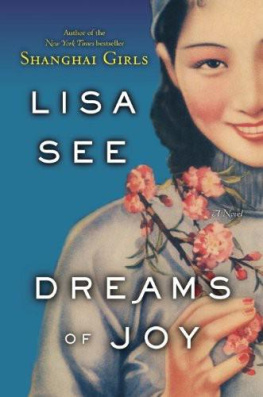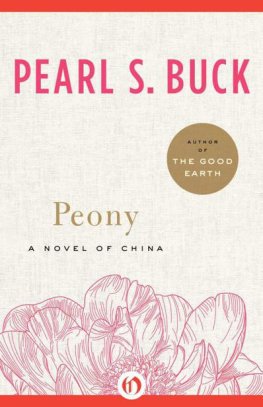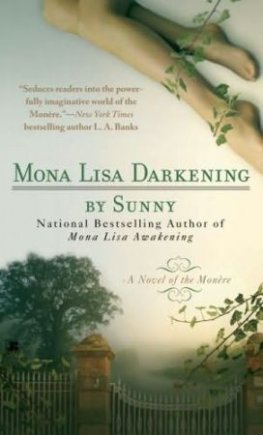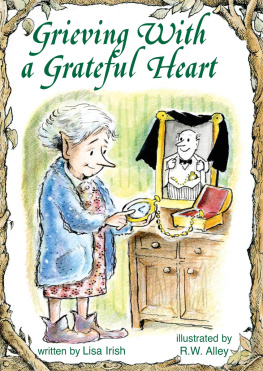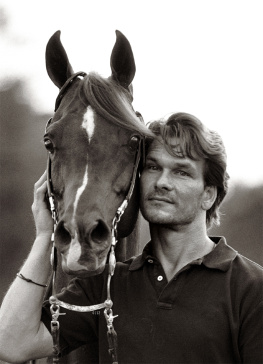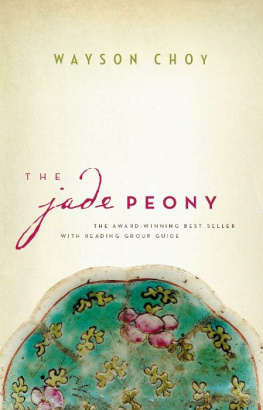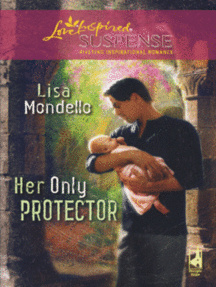Lisa See - Peony in Love
Here you can read online Lisa See - Peony in Love full text of the book (entire story) in english for free. Download pdf and epub, get meaning, cover and reviews about this ebook. year: 2008, publisher: Random House Trade Paperbacks, genre: Non-fiction. Description of the work, (preface) as well as reviews are available. Best literature library LitArk.com created for fans of good reading and offers a wide selection of genres:
Romance novel
Science fiction
Adventure
Detective
Science
History
Home and family
Prose
Art
Politics
Computer
Non-fiction
Religion
Business
Children
Humor
Choose a favorite category and find really read worthwhile books. Enjoy immersion in the world of imagination, feel the emotions of the characters or learn something new for yourself, make an fascinating discovery.
- Book:Peony in Love
- Author:
- Publisher:Random House Trade Paperbacks
- Genre:
- Year:2008
- Rating:3 / 5
- Favourites:Add to favourites
- Your mark:
- 60
- 1
- 2
- 3
- 4
- 5
Peony in Love: summary, description and annotation
We offer to read an annotation, description, summary or preface (depends on what the author of the book "Peony in Love" wrote himself). If you haven't found the necessary information about the book — write in the comments, we will try to find it.
Peony in Love — read online for free the complete book (whole text) full work
Below is the text of the book, divided by pages. System saving the place of the last page read, allows you to conveniently read the book "Peony in Love" online for free, without having to search again every time where you left off. Put a bookmark, and you can go to the page where you finished reading at any time.
Font size:
Interval:
Bookmark:
Acknowledgments
THIS IS A HISTORICAL NOVEL, AND I WOULDNT HAVE BEEN ABLE to write it without the wonderful research of many scholars. For place and time, Id like to thank George E. Bird, Frederick Douglas Cloud, Sara Grimes, and George Kates for their memoirs and guides to Hangzhou and China. For information about Chinese funerary rites, beliefs about the afterworld, the three parts of the soul, the abilities and weaknesses of spirits, and ghost marriages (which are still performed today), Id like to acknowledge Myron L. Cohen, David K. Jordan, Susan Naquin, Stuart E. Thompson, James L. Watson, Arthur P. Wolf, and Anthony C. Yu. Although sometimes Justus Doolittle and John Neviusboth nineteenth-century travelers to Chinacould be somewhat patronizing, they nevertheless did thorough jobs of documenting Chinese customs and beliefs. V. R. Burkhardts Chinese Creeds and Customs is still a useful and practical guide to these subjects, while Matthew H. Sommers book, Sex, Law, and Society in Late Imperial China, thoroughly delineates the regulation of sexual behavior and mens and womens rights in the Qing dynasty.
Lynn A. Struve has found, translated, and cataloged first-person accounts from the MingQing transition. Two of these stories formed the Chen familys experience in Peony in Love. The first comes from an account given by Liu Sanxiu, who was taken captive, sold a few times, and eventually became a Manchu princess. The second is a hair-raising account given by Wang Xiuchu about the massacre in Yangzhou. His familys experience brutally explores the difference between volunteering to sacrifice yourself for your family and being volunteered because youre believed to have less value. (For the novel, I have reduced the ten-day massacre to five.)
In recent years, there has been some wonderful scholarship done on women in China. Im indebted to the work of Patricia Buckley Ebrey (womens lives in the Song period), Susan Mann (womens lives and education in the eighteenth century), Maureen Robertson (womens lyric poetry in late imperial China), Ann Waltner (on the woman visionary TAn-Yang-Tzu), and Ellen Widmer (Xiaoqings literary legacy). I was highly amusedand dismayedby a list in a recent Shanghai Tattler of the twenty criteria for becoming a better wife. Although written in 2005, many of these suggestions found their way into the novel as advice for women to make their husbands happy in the seventeenth century. For those interested in reading more about footbinding, I highly suggest Beverley Jacksons classic Splendid Slippers, as well as Dorothy Kos brilliant and illuminating Cinderellas Slippers and Every Step a Lotus. In addition, Dr. Kos knowledge about Chinese womens lives in the seventeenth century, and the three wives in particular, is impressive and inspiring.
Cyril Birchs translation of The Peony Pavilion is a classic, and I am grateful to the University of Indiana Press for giving me permission to use his beautiful words. Just as I was writing the final pages of the novel, I was lucky to see a lovely nine-hour version of the opera, written and produced by Kenneth Pai, performed in California. For more scholarly approaches to the opera, Im indebted to the work of Tina Lu and Catherine Swatek.
Judith Zeitlin of the University of Chicago has been like a fairy godmother to this project. We began with a lively e-mail correspondence about The Three Wives Commentary. She recommended articles shed written on Chinese female ghosts, spirit writing, self-portraits as reflections of the soul, and the three wives. I was extremely lucky to meet with Dr. Zeitlin in Chicago and spend an incredible evening talking about lovesickness, womens writing, and ghosts. Not long after that, a package arrived in the mail. She had sent me a photocopy of an original edition of The Commentary, owned by a private collector. Dr. Zeitlin never hesitated to share her expertise or assist me in getting help from others.
Translations vary tremendously. For Chen Tongs deathbed poems, what the three wives actually wrote, Wu Rens account of events surrounding the commentary, Qian Yis remembrances of her dream about Liniang, the words of praise written by the books admirers, and all other supplementary material that was published with The Three Wives Commentary, I have used translations by Dorothy Ko, Judith Zeitlin, Jingmei Chen (from her dissertation The Dream World of Love-Sick Maidens), and Wilt Idema and Beata Grant (from The Red Brush, their impressive and comprehensive 900-plus-page collection of womens writing in imperial China).
In addition to The Peony Pavilion material, Im also grateful to the scholars listed above for their translations of the writings of so many other women writers of that period. I have tried to honor those womens voices by using words and phrases from their poems, much as Tang Xianzu created pastiches culled from many other writers in The Peony Pavilion. Peony in Love is a work of fictionall mistakes and changes from the real adventures of the three wives are my ownbut I hope I have captured the spirit of their story.
Thank you to the editors of More and Vogue, whose assignments book-ended this project. Photographer Jessica Antola and her assistant, Jennifer Witcher, were wonderful traveling companions as they followed me almost everywhere I went on my research trip to China. Wang Jian and Tony Tong served as proficient guides and translators, and Paul Moore once again handled my complicated travel plans. Id like to give special acknowledgment to author Anchee Min, who arranged for me to meet Mao Wei-tiao, one of the most famous Kunqu opera singers in the world. Ms. Mao showed me, through an interesting combination of movement and stillness, the depth and beauty of Chinese opera.
Thanks as well go to: Aimee Liu, for her knowledge about anorexia; Buf Meyer, for her provocative thoughts about ancestral emotions; Janet Baker, for her fine copyediting; Chris Chandler, for his unending and patient help with the mailing list; and Amanda Strick, for man-beautiful, her love of Chinese literature, and for being such an inspiring young woman.
Id like to thank Gina Centrello, Bob Loomis, Jane von Mehren, Benjamin Dreyer, Barbara Fillon, Karen Fink, Vincent La Scala, and, well, everyone at Random House for being so kind to me. Ive been very lucky over the years to have Sandy Dijkstra as my agent. Shes simply the best. In her office, Taryn Fagerness, Elise Capron, Elisabeth James, and Kelly Sonnack have all worked tirelessly on my behalf.
Final thanks go as always to my family: to my sons, Christopher and Alexander, for always cheering me on; to my mom, Carolyn See, for believing in me and encouraging me to persist and remember my worth; to my sister, Clara Sturak, for her good and kind heart; and to my husband, Richard Kendall, who asked thoughtful questions, had great ideas, and is very brave about my being away from him so much of the time. To him I say, This and all eternities.
ALSO BY LISA SEE
Snow Flower and the Secret Fan
Dragon Bones
The Interior
Flower Net
On Gold Mountain
About the Author
Lisa See is the author of the New York Times bestselling novel Snow Flower and the Secret Fan, Flower Net (an Edgar Award nominee), The Interior, and Dragon Bones, as well as the widely acclaimed memoir On Gold Mountain. The Organization of Chinese American Women named her the 2001 National Woman of the Year. She lives in Los Angeles. Visit the authors website at www.LisaSee.com.
Authors Note
IN 2000, I WROTE A SHORT PIECE FOR VOGUE MAGAZINE ABOUT Lincoln Centers full-length production of
Next pageFont size:
Interval:
Bookmark:
Similar books «Peony in Love»
Look at similar books to Peony in Love. We have selected literature similar in name and meaning in the hope of providing readers with more options to find new, interesting, not yet read works.
Discussion, reviews of the book Peony in Love and just readers' own opinions. Leave your comments, write what you think about the work, its meaning or the main characters. Specify what exactly you liked and what you didn't like, and why you think so.


